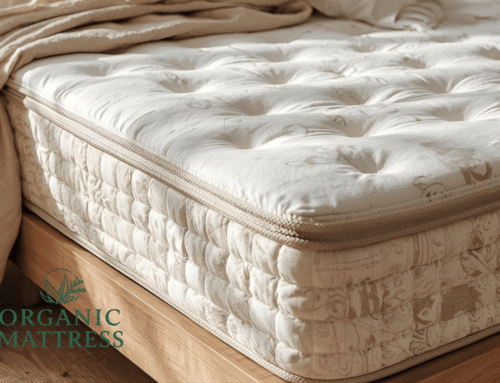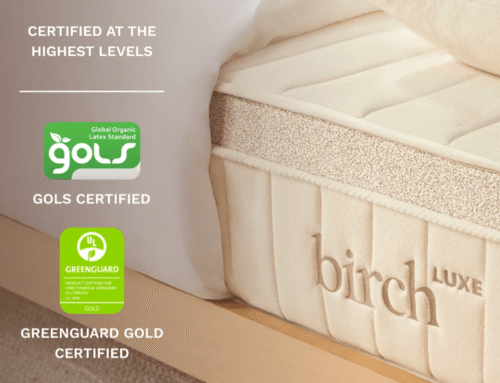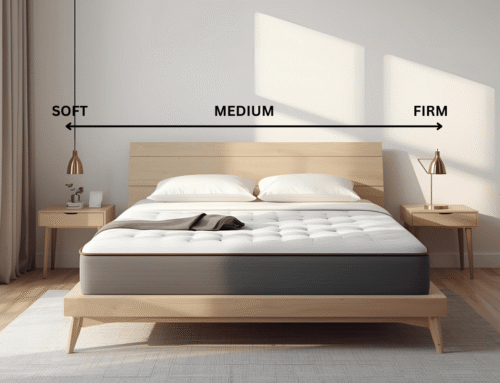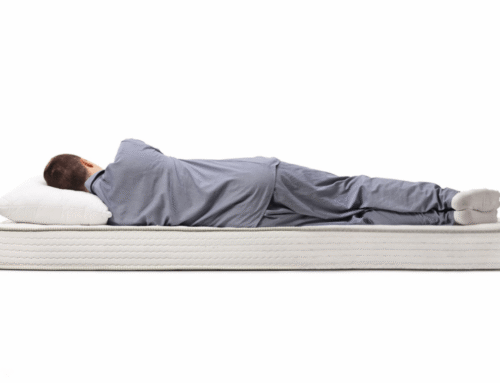Innerspring mattresses are a reliable choice for sleepers who want great support without losing airflow. Unlike dense foam beds, their coil system provides a firmer surface that works well for people with back pain or those who shift positions at night. Breathability is another benefit as these beds are cooler, especially in warm climates.
Understanding what an innerspring mattress is and who invented the first one gives useful context. Some innerspring options feel too firm or bouncy at first, but comfort layers on top ease that without giving up strong base support. Many consumers prefer models with individually wrapped coils since those help absorb motion between partners. Price is also important. A higher coil count or stronger materials usually means longer-lasting performance.
Instead of guessing, it helps to understand how coil types, edge support, and materials affect comfort and lifespan. This guide walks through the essentials so people can sort through choices based on feel, sleep position, and budget. We’ll walk you through what really matters before choosing your next bed.
Key Takeaways
- Start with the coil type: Bonnell, offset, and pocket coils each affect how firm the mattress feels, how well it isolates motion, and how much bounce it has.
- Pay attention to coil count and gauge: More coils mean better overall support, while thicker coils (lower gauge) feel firmer and usually last longer.
- Comfort layers matters: Materials like memory foam, latex, or pillow tops soften the feel but keep the responsive bounce of the coil base.
- Match the mattress to your sleep style: Back and stomach sleepers typically need firmer or medium-firm support to keep their spine aligned.
- Don’t overlook breathability, edge support, and policies: Good airflow, strong edge support, and a solid warranty or trial period all add to the mattress’s comfort and long-term value.
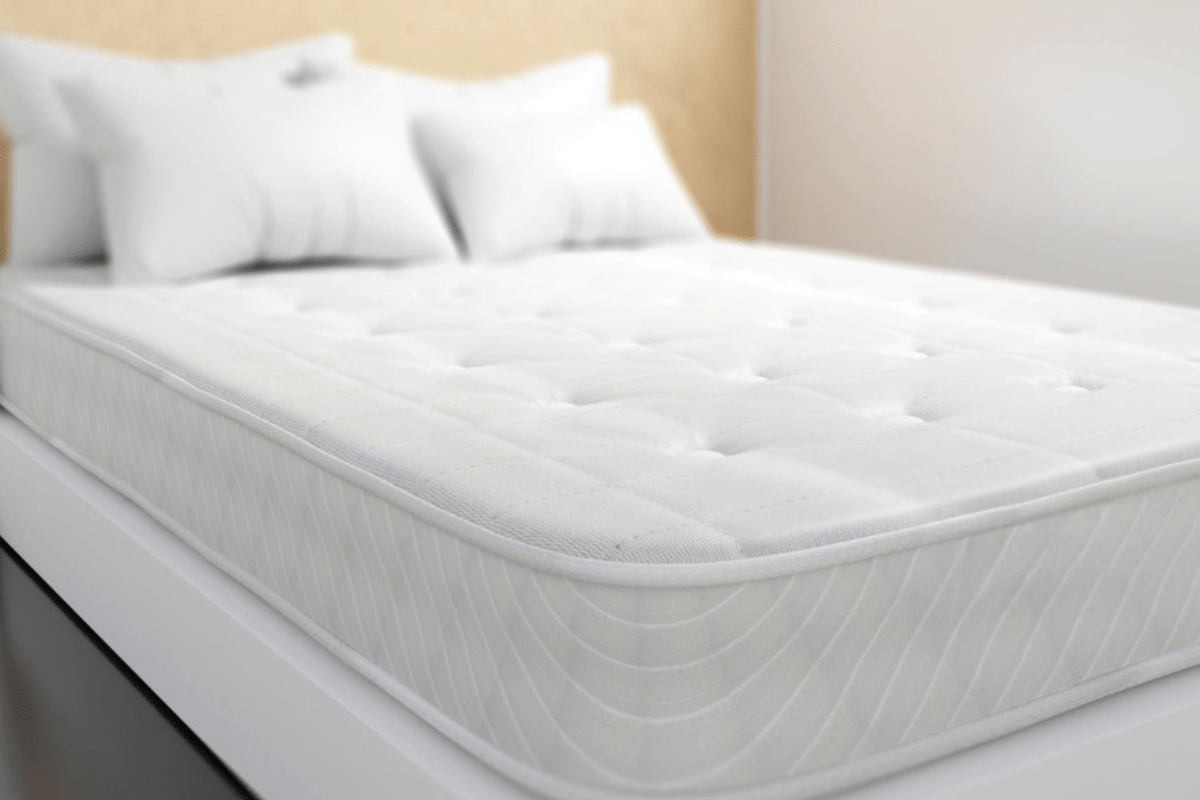
What Makes Innerspring Mattresses So Popular?
Innerspring mattresses have stayed popular for generations because of their comfort. The coil system inside gives the surface a firm and springy response, which helps with ease of movement during sleep. Many people who shift positions throughout the night say they prefer that lifted sensation instead of the deep hug of foam.
The structure also promotes better airflow. Space between coils allows air to circulate more freely, which can help reduce heat retention. For those who tend to wake up warm or sweaty, this added breathability can be a noticeable relief.
Some prefer the durability and consistent support that springs offer. Unlike some foam beds that soften over time, a quality innerspring mattress can stay more stable. And since many of them are more affordable than hybrids or all-foam options, they are a practical choice for everyday use. To better understand these choices, it helps to know the difference between a hybrid mattress and an innerspring and what makes them distinct in construction and feel.
Why Choose An Innerspring Mattress?
Some sleepers prefer innerspring mattresses because of how firm and responsive they feel. The coils help keep the body aligned, especially for those who rest on their back or stomach. There’s a noticeable lift that foam options usually don’t offer.
People who sleep hot often find coil mattresses more breathable. The open structure of the springs allows better airflow, so the surface stays cooler throughout the night. This can help with fewer sleep disruptions, especially during warm seasons.
Innerspring mattresses also tend to cost less than hybrids or all-foam types. Entry-level options are widely available, yet many last over time, especially those with reinforced edges or thicker coils. For those who like a bouncy, supportive feel with a cooler surface, innersprings are a great choice, especially when comparing the benefits of innerspring mattresses and memory foam to find the right fit for your needs.
How To Choose Innerspring Mattress Support Features
Support feels different across innerspring mattresses, and much of that comes down to the coil system inside. For anyone trying to narrow down options, coil construction offers some of the clearest clues about how a mattress feels and performs over time. It’s less about flashy features and more about structure and balance. So, if you’re wondering how many coils should an innerspring mattress have and what coil gauge means for your comfort, here’s what you need to know:
- Coil count reflects how many springs are packed inside. While high numbers sound impressive, build quality still matters more. A queen size with at least 400 coils usually provides a solid base.
- Coil gauge refers to the wire thickness. A lower gauge (like 12 to 14) means firmer, thicker coils that hold up well under pressure.
- Zoned support uses firmer coils through the center to support hips and back, and softer coils near the shoulders for pressure relief.
Edge reinforcement also deserves attention. Stronger edges help avoid that sinking feeling along the sides and offer better support for sitting, especially for those who use the bed for more than sleep.
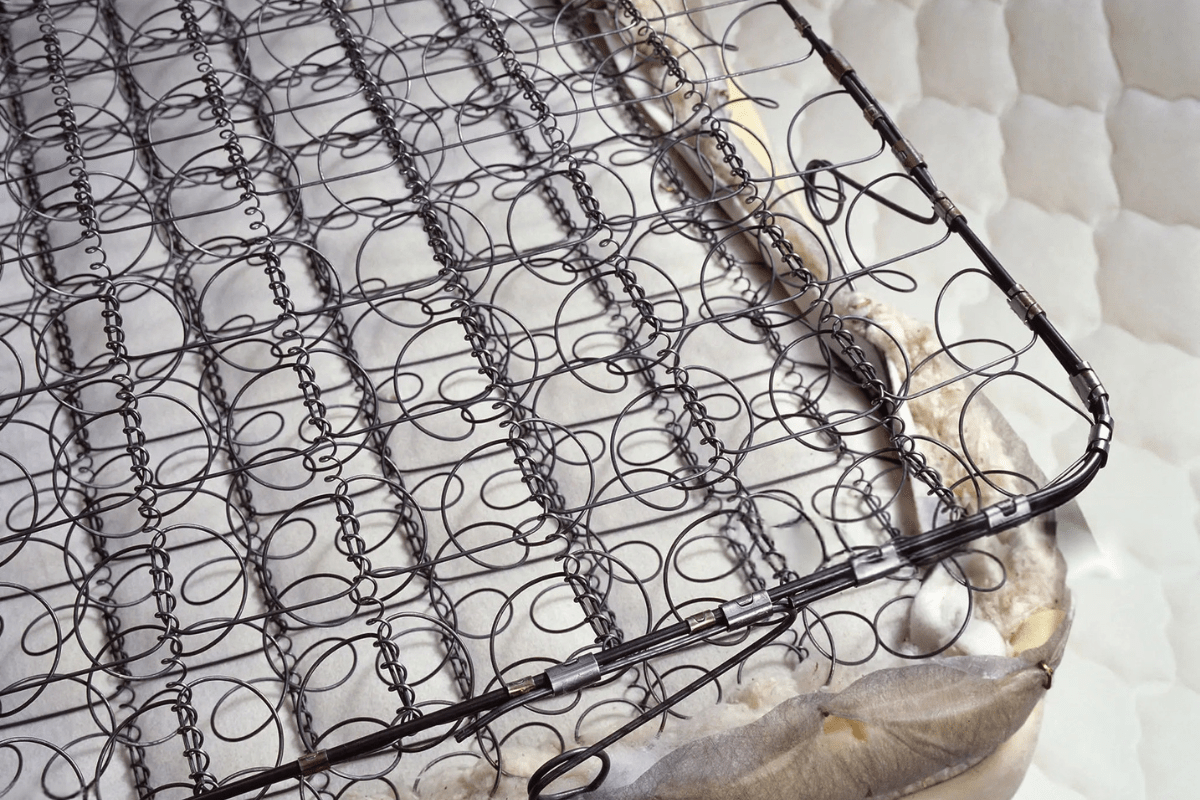
Types Of Innerspring Mattresses Explained
Bonnell coils are one of the oldest types of innerspring systems. Their hourglass shape creates firm support and a bit of bounce, which is great for those who prefer a classic mattress feel. They’re usually found in entry-level models, though they tend to sag sooner than other options.
Offset coils take the same hourglass structure and add a hinged design, which helps them respond more evenly to pressure. They feel more stable than Bonnell coils and reduce motion transfer better. This style holds up longer, especially for couples or those who toss and turn often.
Pocketed coils are individually wrapped springs that respond on their own. This type adapts to the body’s curves and limits motion across the surface, so partners don’t disturb each other as much. Many higher-end mattresses use pocket coils, and most would agree the comfort and support justify the upgrade.
The difference between innerspring and pocket coil mattress depends on how the springs are constructed and how they respond to pressure, which directly impacts motion isolation and contouring support. Continuous coils use one single wire throughout the mattress; they feel sturdy but often too firm, which may not suit side sleepers.
How To Buy An Innerspring Mattress Online Or In-Store
Shopping for an innerspring mattress in-store means taking time to lie down in a natural sleep position, not just for a minute or two. It helps to feel the support and firmness firsthand. Some stores push discounts that aren’t always real deals, so it’s smart to check the regular pricing and ask about coil gauge and count to understand what’s inside. One thing people overlook is the weight of the mattress itself, and it usually affects how easy it is to set up or move around during delivery or rearranging.
Online buyers often rely on detailed specifications to compare models. Brands that clearly list coil types, support systems, and comfort layers tend to be more transparent. Verified reviews from people who share similar sleep habits, like side or back sleepers, provide useful insights beyond marketing claims.
A return policy with at least 90 nights gives buyers time to really test the bed. Some brands also cover free shipping both ways, which removes pressure from the decision. While shopping online takes away the chance to try before buying, clear policies and reviews help balance that risk.
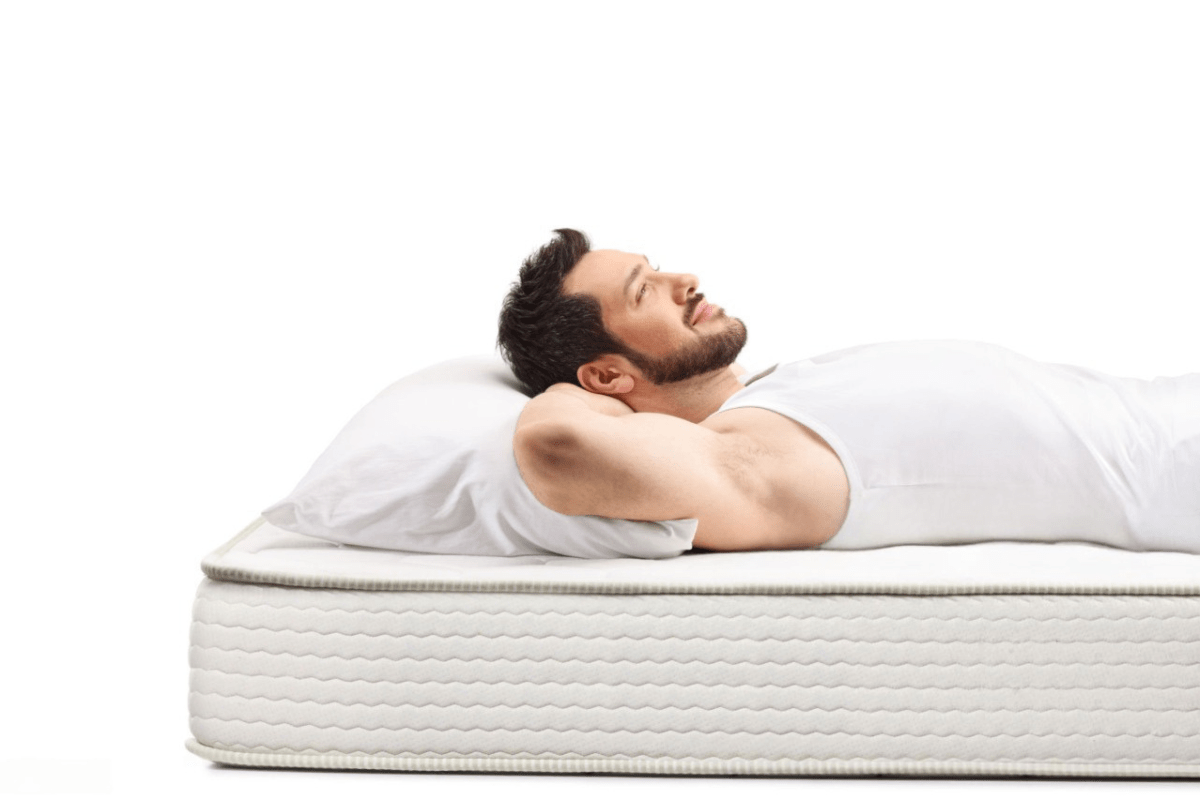
How To Choose An Innerspring Mattress For Your Sleep Style
Different sleep styles affect how an innerspring mattress feels throughout the night. Side sleepers prefer something with more cushioning, usually a medium to plush firmness. A mattress with pocket coils and a pillow-top or Euro-top can ease pressure around the shoulders and hips without feeling too soft.
Back sleepers often rest best on a medium-firm or firm surface. Extra lumbar support and durable coils help maintain alignment without adding stiffness. A reinforced center zone can offer more balanced support, especially for those with lower back concerns.
Stomach sleepers usually benefit from firmer options to avoid dipping in the midsection. Too much give can throw off spinal alignment and cause discomfort. For those who shift positions often, a mattress with individually wrapped coils offers better responsiveness so movement doesn’t feel restricted.
Top Signs You’re Picking The Right Innerspring Mattress
Choosing an innerspring mattress involves looking for firm support that doesn’t create pressure points. Comfort in the preferred sleep position is important, alongside breathable materials that help regulate temperature throughout the night. A mattress that stays cool tends to improve overall sleep quality.
High-quality coils and reliable edge support contribute to better durability and consistent feel across the surface. It’s helpful when the mattress comes with a warranty of at least ten years, reflecting confidence in its build and materials. Transparency from the brand about specifications also adds trust and makes comparison easier.
Checking these factors provides a solid foundation for mattress selection. A mattress meeting most of these points usually indicates a thoughtful design focused on long-term comfort and support. This approach can help avoid surprises after purchase and support restful nights.
Extra Features Worth Considering
Extra features on a mattress add value beyond basic support and offer different benefits depending on personal priorities. Some enhancements improve comfort, while others increase durability or accommodate specific needs like sharing the bed with a partner. Considering these options carefully helps align choices with lifestyle and preferences.
Regularly turning an innerspring mattress helps extend its lifespan, and understanding how long it typically lasts provides better expectations for wear and performance.
Common upgrades include:
- Pillow-top or Euro-top comfort layers
- Organic or natural materials such as cotton or wool
- Adjustable base compatibility
- Motion isolation designed for couples
- Reinforced edges that provide better support when sitting
These additions often enhance the overall experience by providing softness, better temperature regulation, or improved functionality. However, not all features suit everyone, so selecting those that match actual needs matters more than opting for every extra.
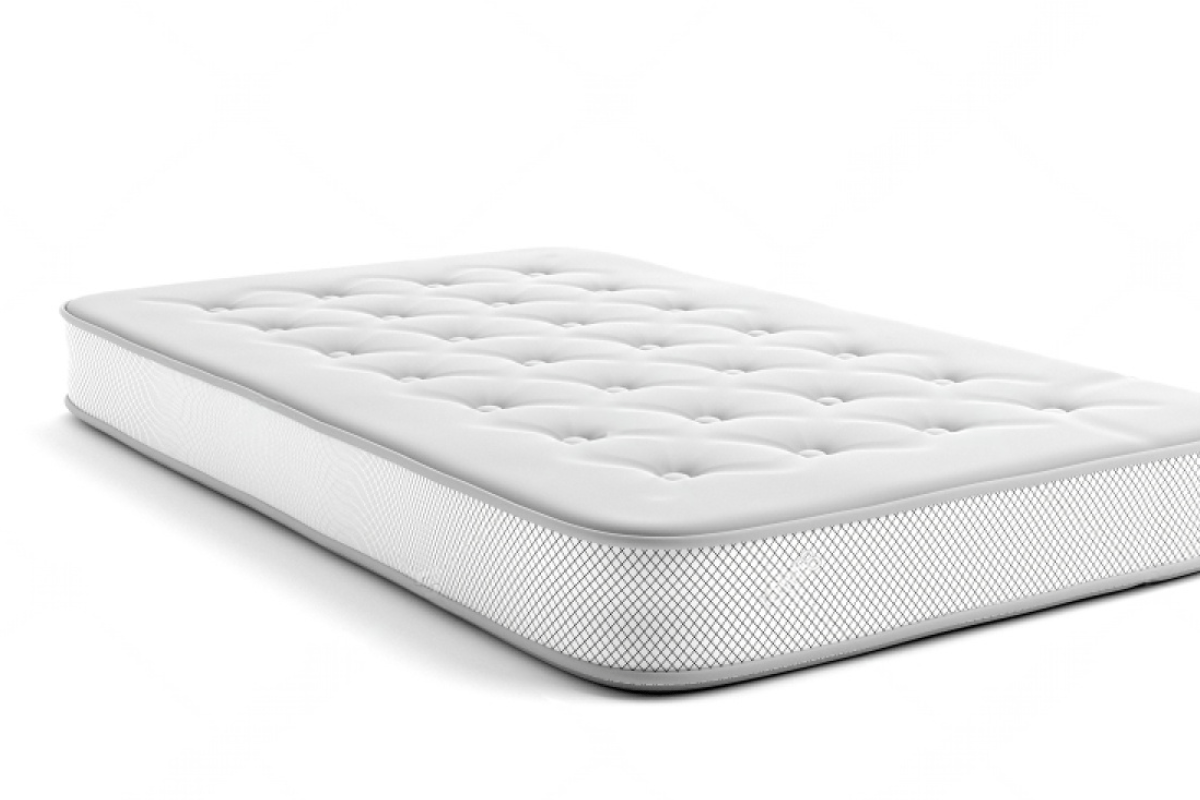
How To Choose An Innerspring Mattress?
Choosing an innerspring mattress involves considering a few key factors that affect comfort and durability. Sleep position and body type play important roles in determining the right mattress firmness. Those who sleep on their side might prefer a softer feel, while back or stomach sleepers often benefit from firmer support.
Pocket coils tend to offer improved motion isolation and tailored support compared to traditional innerspring systems. Breathable materials contribute to temperature regulation, which helps avoid overheating during the night. Edge support also matters, especially for people who tend to sit or sleep near the mattress edges.
Buying from a reputable retailer ensures transparency about mattress specifications and materials. Clear product details help buyers understand what they’re getting and avoid surprises later on. Taking time to compare options based on these essentials helps simplify the mattress-buying experience.
Final Thoughts
Picking an innerspring mattress is simpler when you focus on a few key features. Coil quality is essential in durability and support, while comfort layers affect how the mattress feels on the body. Finding the right balance between these elements provides proper spinal alignment and pressure relief. Many buyers also consider how long an innerspring mattress lasts and what factors influence its overall lifespan.
Shopping for a mattress does not mean choosing the priciest option. Many affordable innerspring mattresses offer solid construction and comfort that suit different sleeping styles and preferences. Prioritizing personal needs over brand names often leads to a better fit.
Understanding what to look for in coil design and cushioning prepares anyone to make a wise decision. The right mattress supports restful sleep without stretching the budget unnecessarily. In the end, the best mattress keeps the body comfortable and refreshed night after night.

